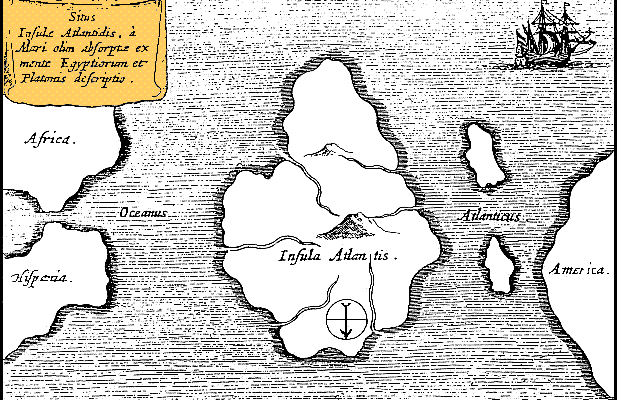
Deep under the North Sea lies the ruins of an ancient civilization that sank into the sea. Not it’s not Atlantis, it’s Doggerland, scientists believe they’re on the verge of finding them.
National Geographic writes, “Things aren’t always what they seem on the surface. Looking at the area between mainland Europe and the eastern coast of Great Britain, you probably wouldn’t guess it had been anything other than a great expanse of ocean water. But roughly 12,000 years ago, as the last major ice age was reaching its end, the area was very different. Instead of the North Sea, the area was a series of gently sloping hills, marshland, heavily wooded valleys, and swampy lagoons: Doggerland.
Mesolithic people populated Doggerland. Archaeologists and anthropologists say the Doggerlanders were hunter-gatherers who migrated with the seasons, fishing, hunting, and gathering food such as hazelnuts and berries.
Over time, the Doggerlanders were slowly flooded out of their seasonal hunting grounds. Water previously locked away in glaciers and ice sheets began to melt, drowning Doggerland. Around 6,000 years ago, the Mesolithic people were forced onto higher ground, including in what is today Britain and the Netherlands.
Evidence of Doggerlanders’ nomadic presence can be found embedded in the seafloor, where modern fishermen often find ancient bones and tools that date to about 9,000 years ago. These artifacts brought Doggerland’s submerged history to the attention of British and Dutch archaeologists and paleontologists.”
A new study out of England has proven that magnetic fields can help researchers find buried civilizations that sank into the sea.
Popular Mechanics writes that scientists would love to understand more about these possible ancient civilizations that called Doggerland home, but marine archeology is notoriously difficult. While you might think scientists have time on their side, the explosion of interest in seabed mining—and in the case of the North Sea, wind farm construction—could place these fragile areas of human history at risk.
So scientists at the University of Bradford in the U.K. are turning to a novel method in marine archaeology and analyzing magnetic fields in the hopes of discovering mysteries of human activity in Doggerland. The researchers describe the area as “amongst the most resource-rich and ecologically dynamic areas during the later Paleolithic and Mesolithic periods,” so there could be a lot to discover along the seabed.
“Small changes in the magnetic field can indicate changes in the landscape, such as peat-forming areas and sediments, or where erosion has occurred, for example in river channels,” says University of Bradford Ph.D. student Ben Urmston in a statement. “As the area we are studying used to be above sea level, there’s a small chance this analysis could even reveal evidence for hunter-gatherer activity.”
Urmston will be analyzing magnetic data gathered by Royal Haskoning, a survey firm that’s been exploring the North Sea as part of an environmental impact assessment for future green energy initiatives. This data is collected using magnetometers, which are torpedo-shaped instruments usually towed behind a ship that leverages an atomic physics principle known as the Overhauser effect to record magnetic fields along the ocean floor.
“The existence of what is now known as Doggerland was established in the late 19th century. H. G. Wells referred to the concept in “A Story of the Stone Age” (1897), which is set in “a time when one might have walked dryshod from France (as we call it now) to England, and when a broad and sluggish Thames flowed through its marshes to meet its father Rhine, flowing through a wide and level country that is underwater in these latter days, and which we know by the name of the North Sea. … Fifty thousand years ago it was, fifty thousand years if the reckoning of geologists is correct”, though most of the action seems to occur in what is now Surrey and Kent, but stretching out to Doggerland,” according to researchers.
“The remains of plants brought to the surface from Dogger Bank were studied in 1913 by Clement Reid, and the remains of animals and worked flints from the Neolithic period had also been found. In his book The Antiquity of Man of 1915, anatomist Sir Arthur Keith discussed the archaeological potential of the area. In 1931, the trawler Colinda hauled up a lump of peat whilst fishing near the Ower Bank, 40 km (25 mi) east of Norfolk. The peat was found to contain a barbed antler point, possibly used as a harpoon or fish spear, 220 mm (8.5 in) long, which dated from between 4000 and 10,000 BCE when the area was tundra.”
[Read More: Michael Jordan Gets Another Win]









